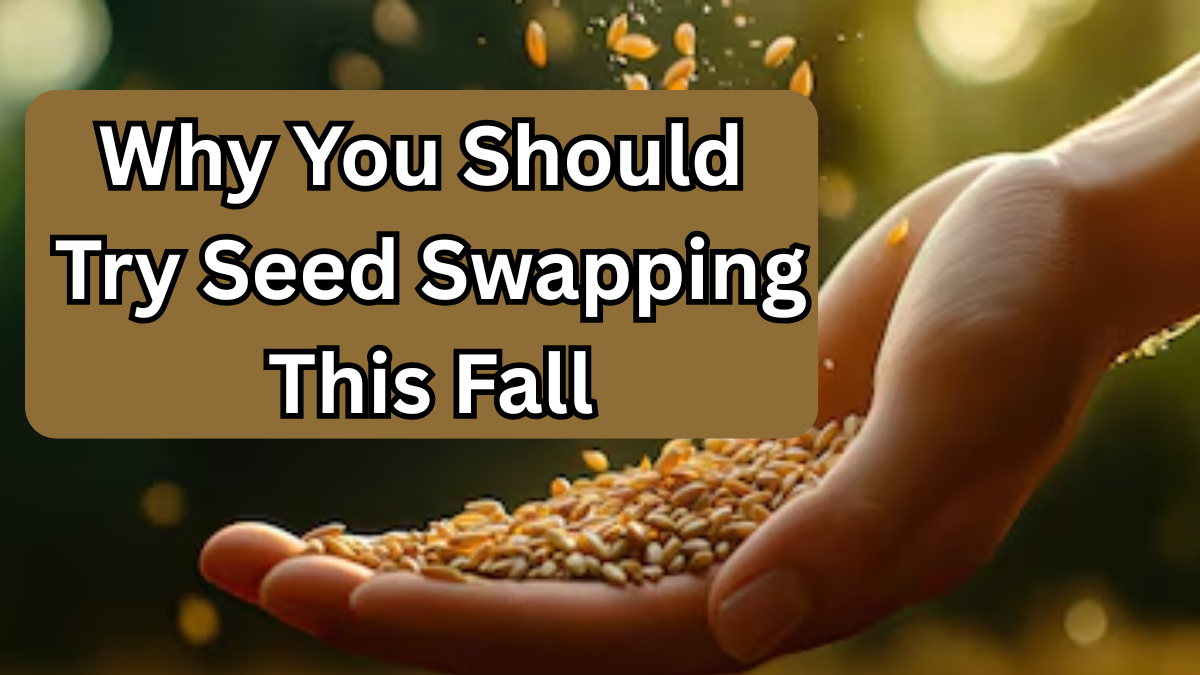Fall is a magical season for gardeners. As leaves turn golden and the harvest season comes to a close, it’s the perfect time to think about seed saving and planning for next year’s garden. One trend gaining momentum among gardening enthusiasts is seed swapping in fall. Not only is it a sustainable way to grow your garden, but it also strengthens community connections and preserves heirloom varieties.

What is Seed Swapping?
Seed swapping is the practice of exchanging seeds with fellow gardeners. Instead of buying seeds from a store, gardeners share what they have harvested, creating a cycle of growth and sustainability.
Key benefits of seed swapping include:
-
Access to a wider variety of plants, including rare heirlooms
-
Encouraging biodiversity in your garden
-
Learning new gardening techniques from fellow gardeners
-
Saving money on seeds for the next planting season
Why Fall is the Best Time for Seed Swapping
Fall is ideal for seed swapping in fall because it’s when many plants have finished their growing cycle and seeds are mature. This is the perfect window to collect, dry, and share seeds.
-
Mature seeds: Seeds are fully developed and ready for storage
-
Better germination: Properly stored seeds have a higher germination rate in spring
-
Community gatherings: Many local gardening clubs host seed swaps in fall, making it social and fun
Steps for Successful Seed Saving
If you’re new to seed saving, here’s a simple guide:
| Step | Action | Tip |
|---|---|---|
| 1 | Select healthy plants | Choose plants that are disease-free and thriving |
| 2 | Harvest seeds | Collect seeds once fruits or pods are fully matured |
| 3 | Clean seeds | Remove pulp, chaff, and debris to prevent mold |
| 4 | Dry seeds | Air-dry for several days in a cool, dry place |
| 5 | Store seeds | Use labeled envelopes or jars; keep in a cool, dark spot |
Following these steps ensures that your seeds will maintain viability and strong germination rates for the next season.
Tips for a Successful Seed Swap
To make the most of your seed swapping in fall experience:
-
Bring seeds in small, labeled packets including plant name, variety, and harvest year
-
Share tips for growing the plant or any unique care instructions
-
Respect heirloom seeds—these are varieties passed down for generations and are often rare
-
Participate in community discussions to learn about new plants and varieties
Why Community Matters in Seed Swapping
Seed swapping isn’t just about seeds—it’s about community. Exchanging seeds builds relationships, fosters shared knowledge, and encourages local biodiversity. It’s a way for gardeners to connect and support one another in sustainable gardening practices.
Beginner-Friendly Plants for Seed Swapping
Some plants are easier for beginners to save and swap:
| Vegetable/Herb | Tips for Saving | Germination Notes |
|---|---|---|
| Tomatoes | Let fully ripe fruit dry | High germination if dried properly |
| Lettuce | Harvest seed stalks after flowering | Moderate germination |
| Basil | Allow flowers to go to seed | Store in a dark, cool container |
| Peppers | Remove seeds from ripe pods | High germination if dried fully |
| Carrots | Collect seed umbels | Good germination with proper drying |
Starting with easy-to-save seeds ensures success and builds confidence for more challenging varieties.
Final Thoughts
Participating in seed swapping in fall is not only fun and educational, but it’s also a way to contribute to a greener, more connected gardening community. By practicing seed saving and sharing heirlooms, you preserve plant diversity and increase your garden’s resilience for the seasons to come.
FAQs About Seed Swapping
1. What is the difference between heirloom seeds and hybrid seeds?
Heirloom seeds are traditional varieties passed down for generations, while hybrid seeds are bred for specific traits. Heirlooms are ideal for seed saving and swapping.
2. How long can I store seeds before planting?
Most seeds remain viable for 1–5 years if stored in a cool, dry, dark place. Proper labeling ensures you know the harvest year.
3. Can I swap seeds online if I don’t have a local community?
Yes! Many gardening forums and social media groups facilitate online seed swaps. Always check local regulations for shipping seeds.
4. How do I ensure my swapped seeds will germinate successfully?
Select healthy seeds from strong plants, clean and dry them properly, and store them correctly. Providing germination tips when swapping helps others succeed too.
Click here to learn more